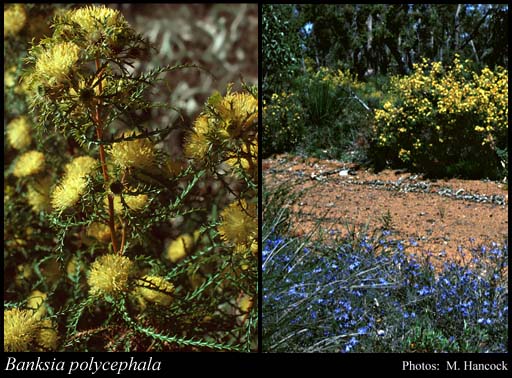- Reference
- Austral.Syst.Bot. 20:69 (2007)
- Conservation Code
- Not threatened
- Naturalised Status
- Native to Western Australia
- Name Status
- Current
Erect, non-lignotuberous shrub, 0.75-4 m high, to 3 m wide. Fl. cream-yellow, Jul to Oct. Gravelly lateritic soils (sand, loam), laterite.







Scientific Description
Shrubs, 2-2.5 m high; branchlets glabrous or hairy. Leaves petiolate, alternate, 35-175 mm long, 3-10 mm wide, hairy; petiole 1-10 mm long; lamina flat, once divided, pinnately divided, divided to the midrib, with 8-31 lobes on each side, the margins recurved. Inflorescences pubescent (with soft, straight, erect hairs), yellow; innermost bracts 8-9 mm long, hairy. Perianth 13-15 mm long, glabrous, without awns; pistil 16-21 mm long, curved, style hairy. Follicles hairy, pubescent (with soft, straight, erect hairs), obovate, 7-9 mm long. Flowers in August, September or October. Occurs in the South-west (SW) Botanical Province(s), in the Geraldton Sandplains (GS), Swan Coastal Plain (SWA), Avon Wheatbelt (AW) or Jarrah Forest (JF) IBRA subregion(s). : Conservation code Priority Four (P4).
Distribution
- IBRA Regions
- Avon Wheatbelt, Geraldton Sandplains, Jarrah Forest, Swan Coastal Plain.
- IBRA Subregions
- Dandaragan Plateau, Katanning, Lesueur Sandplain, Northern Jarrah Forest.
- Local Government Areas (LGAs)
- Carnamah, Chittering, Dandaragan, Gingin, Moora, Toodyay, Victoria Plains.